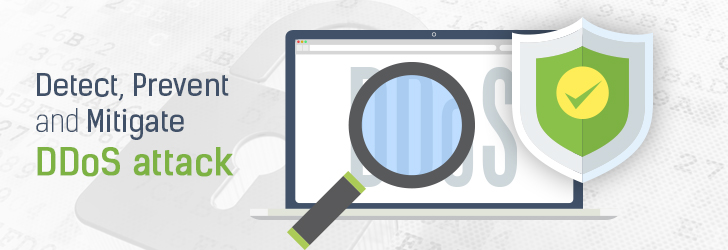
Given the fact that a DDoS attack can bring down any computer system in spite of the advanced hardware setup, it is essential to do some periodic checks in order to detect the possibility of a DDoS attack. Here are some essential ways to prevent and mitigate a DDoS attack.
Self-Monitor your site's stats:
If your website is designed to handle X number of users (or requests), any simultaneous requests that overload your website can disrupt its system. Hence, you need to monitor your website statistics periodically.
You may use a web statistics software that monitors and send the periodic report on website performance, user load, page views, bandwidth used by your IP address and website. A graphical representation of the same is an easier way to understand abnormalities and guess a potential DDoS attack.
You can also check your network stats and traffic log files to locate an inordinate activity in the user visits, file downloads or web form submissions.
Increase your bandwidth:
As your site keeps growing, it is essential to keep your bandwidth growing so as to maintain site performance and handle traffic load. This is very much essential if your servers are located in various locations and are accessed by multiple users across the globe. This may not completely prevent a DDoS attacks but can provide some buffer time to respond to an attack before you face a system breakdown.
Keep your DNS extra-protected:
Some hackers may use your DNS network to attack another network, hence it is essential to keep it secured. There are certain companies that offer enhanced DNS protection against DNS forgery or manipulation.
Set up an alert system:
It is not always easy to prevent DDoS attacks; however, if you are alerted at the onset of an attack, there is more time for quick resolution. Hence, you may consider setting up an alert system that notifies when the server is on the verge of a crash or notices abnormal traffic, receives an inordinate number of SYN packets, etc. This helps block malicious traffic and make ways for legitimate traffic to access your network.
Advanced Firewall Protection:
Firewalls apply simple rules to blacklist IP addresses and prevent data transmission over certain domains. However, advanced firewall systems that can actively blacklist IPs, load balancer distributing loads amongst multiple servers, and performance monitoring system needs to be employed to better prepare for DDoS attacks. Firewalls play a major role in identifying the attack source – along with source IP address, the length of the packet, packet size, and more. This information is needed to mitigate the attack and prevent similar attacks in future as well.
Use 3rd-party DDoS Mitigation Services:
If you are already under an attack and your system is about to crash, all you can do is use 3rd-party DDoS mitigation services such as Incapsula.
Share this post
Leave a comment
All comments are moderated. Spammy and bot submitted comments are deleted. Please submit the comments that are helpful to others, and we'll approve your comments. A comment that includes outbound link will only be approved if the content is relevant to the topic, and has some value to our readers.

Comments (0)
No comment